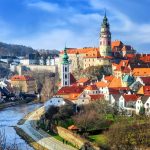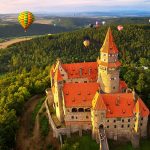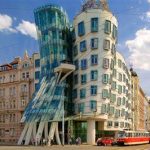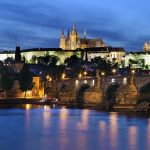By Neil Wilson, Writer
Well, there’s the beer. Not only did the Czechs invent the best beer in the world, they’ve been reinventing it over the last decade with a wave of innovative new microbreweries. And the history. If you want to learn about European history, you’ll find it all here compressed into an easily digested package – from Good King Wenceslas and the Defenestration of Prague to the Habsburg empire, two world wars, the Cold War and the Velvet Revolution. Then there’s cubist architecture, weird art and the Czechs’ deliciously dark sense of humour. And did I mention the beer?
Money
Although the Czech Republic is a member of the European Union, it is not so far a member of the Eurozone and for this reason, the euro is not the official currency (yet despite this it is possible to exchange euro for Czech crowns without any problems). The official currency is the Koruna (Crown, CZK), which is made up of 100 Hellers
Eating and Drinking
Czech cuisine is quite heavy. Lots of meat (usually pork or beef) served with dumplings, potatoes or rice, in a sauce. Traditional Czech food is pork with dumplings and sauerkraut (veprove, knedliky a zeli), served always with a glass of beer. The traditional starter is hot soup.
The most famous Czech drink is beer (pivo). A half-litter glass is often cheaper than a Coke or cup of coffee. The best-known Czech beer is Pilsner. Its name is derived from a town in western Bohemia called Plzen (Pilsen in German). Usually each pub is supplied by a single brewery. It means only one brand of beer is available, but several types might be on offer. The usual type is draught light beer (svetle) and in a number of beer halls serve special strong dark lagers (tmave). If you would like to taste an original Czech liqueur, order Becherovka. It is a bitter-sweet, yellow herbal drink. It can be served both as an aperitif and a liqueur or diluted with tonic.
Tipping
Tipping is at your discretion. As a guideline, we recommend the following gratuities (GBP in the United Kingdom, EURO in other countries of Europe): Through tour conductor—7 EUR or 7 GBP per guest per night Long distance coach driver – 3 EUR or 3 GBP per guest per night Local guides – 1 EUR or 1 GBP (half day), 2 EUR or 2 GBP (full day) Local drivers – 1 EUR or 1 GBP (half day), 2 EUR or 2 GBP (full day)
Australia Government Travel Advice
The Australian Government provides up to date information on the safety of travelling to various countries, and all travellers should take note of this advice. Liberty Tours recommends that all travellers take out appropriate Travel Insurance to cover the entire duration of their absence from home. Liberty Tours can assist with obtaining Travel Insurance.
Follow this link for current official assessment:
https://www.smartraveller.gov.au/destinations/europe/czech-republic
Advice on health risks and vaccination recommendations can also be found using the same link.
Weather
The Czech Republic has a temperate climate with four seasons. Summer (May to September) receives the highest temperatures and heaviest rainfall, is an excellent season for swimming. In winter people ski in the mountains.
What to pack
In winter: bring warm clothes, such as a sweater, a down jacket, a hat, gloves, and a scarf.
In summer: bring light clothes, t-shirts and shorts, but also long pants, a jacket and a sweatshirt for the evening or for cooler days, and a raincoat or umbrella.






